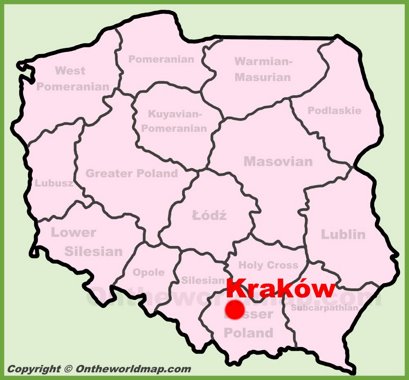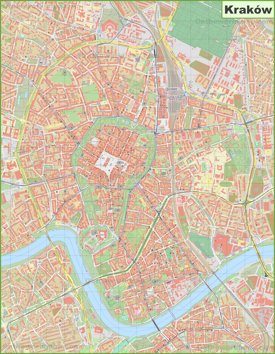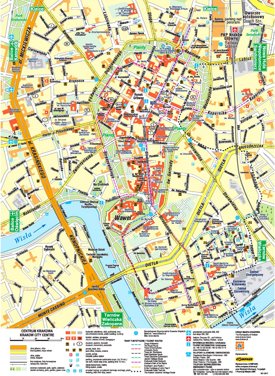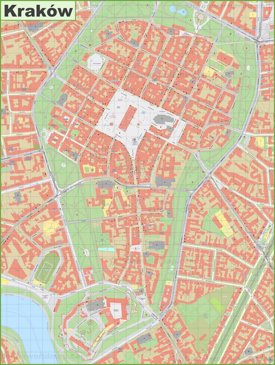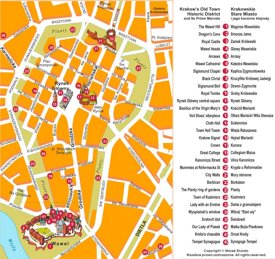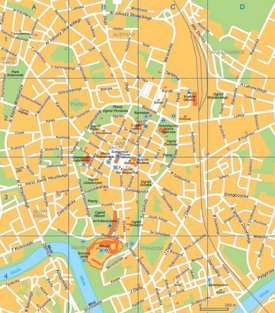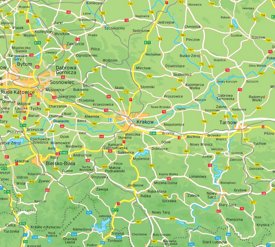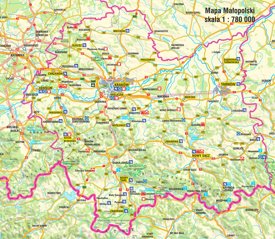Kraków Maps
Online Map of Kraków
About Kraków
Kraków (also known as Cracow in English) is the second-largest city in Poland and the historical capital of the country. Located in southern Poland on the Vistula River, it serves as the administrative capital of Lesser Poland Voivodeship. With a population of approximately 800,000 residents in the city proper and over 1.5 million in the metropolitan area, Kraków is a major economic, cultural, and educational hub.

The city's history dates back to the 7th century, and it served as Poland's capital from 1038 to 1596. The Main Market Square (Rynek Główny), established in 1257, is the largest medieval town square in Europe and remains the heart of the city. The historic center, featuring the Wawel Royal Castle, the Gothic St. Mary's Basilica, and numerous other architectural monuments, was declared a UNESCO World Heritage site in 1978. The Wawel Castle, situated on Wawel Hill, served as the residence of Polish kings for centuries and represents various architectural styles, from Romanesque to Baroque.

Kraków is home to one of the oldest universities in Europe, the Jagiellonian University, founded in 1364. The university's historic Collegium Maius building is a prime example of Gothic architecture and houses a museum containing medieval scientific instruments and university memorabilia. The city's Jewish heritage is preserved in the historic Kazimierz district, which features several synagogues, including the Old Synagogue dating back to the 15th century. During World War II, many of Kraków's architectural treasures survived relatively intact, making it one of the few major Polish cities to preserve its historic character.
Modern Kraków is a significant cultural center with over 28 museums, including the famous Czartoryski Museum housing Leonardo da Vinci's "Lady with an Ermine." The city hosts numerous international festivals, including the Jewish Culture Festival and the Kraków Film Festival. The economy is diverse, with strong IT, outsourcing, and high-tech sectors. The city is also a major tourist destination, attracting over 14 million visitors annually. Notable modern attractions include the Wieliczka Salt Mine on the city's outskirts, featuring underground chambers, chapels, and sculptures carved from salt.
The city serves as a significant transportation hub with an international airport, extensive rail connections, and modern public transit system. Kraków's commitment to preserving its historical heritage while embracing modern development has earned it recognition as a European Capital of Culture. The city is also known for its vibrant student life, with over 200,000 students attending its 23 universities and colleges, making it one of the leading academic centers in Central Europe.
The Facts:Voivodeship: Lesser Poland.
County: Kraków County.
Population: ~ 804,237 (30 June 2023).
Metropolitan population: 1,500,000.
Main sights in Kraków
- Wawel Cathedral
- St. Mary's Basilica
- Saints Peter and Paul Church
- Wawel Castle
- Floriańska Street
- Cloth Hall
- Main Square
- Church of St Barbara
- City Defence Walls
- Florian Gate
- Barbican
- High Synagogue
- Czartoryski Museum
- Monastery of Camaldolese Monks
- Basilica of St Francis
- Rynek Underground
- Wieliczka Salt Mine
- Kościuszko Mound
- Benedictine Abbey in Tyniec
- Camaldolese Priory
Districts of Kraków
- Stare Miasto
- Grzegórzki
- Prądnik Czerwony
- Prądnik Biały
- Krowodrza
- Bronowice
- Zwierzyniec
- Dębniki
- Łagiewniki-Borek Fałęcki
- Swoszowice
- Podgórze Duchackie
- Bieżanów-Prokocim
- Podgórze
- Czyżyny
- Mistrzejowice
- Bieńczyce
- Wzgórza Krzesławickie
- Nowa Huta

